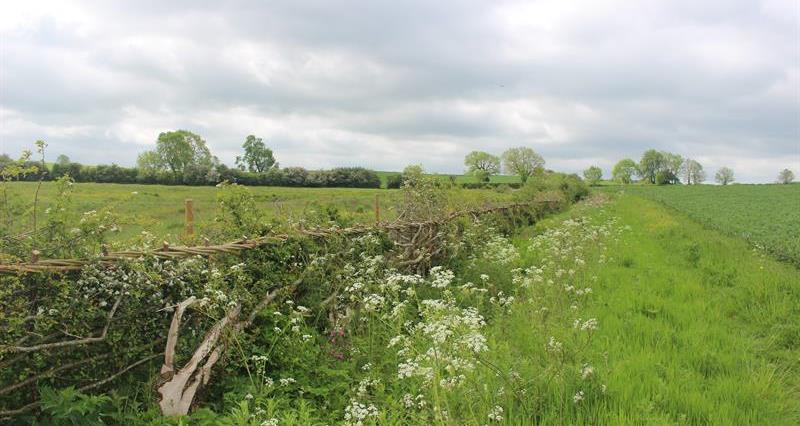The recently-expanded SFI does increase the range of actions available to grassland farms and builds on previous CS (Countryside Stewardship) options.
However, it is an increasingly complicated picture and Defra’s recent update has done little to address this.
The main additions to the grassland offer are supplements for haymaking (GRH7, £157/ha and GRH8, £187/ha), lenient grazing (GRH10, £28/ha) and cattle grazing (GRH11, £59/ha) – but access to these is restricted to land that is in the one of base actions of low-input grassland (CLIG3, £151/ha), or species-rich grassland (GRH6, £646/ha).
In addition, there is a supplement for at-risk native breeds where they are kept on grazed habitats (SPM2-5, £92/ha to £11/ha), although, again, a suitable base action needs to be in place, and there is an issue with the livestock unit calculation (covered later).
Other new ‘in-field’ grassland actions include scrub (SCR1, £588/ha and SCR2, £350/ha) and rough grazing for birds (GRH1, £121/ha). Details of the species-rich grassland offer have just been published and there are buffer strips available to protect in-field trees (BSF5, £295/ha), ponds (BSF3, £311/ha) and watercourses (BSF6, £742/ha).
Following NFU work, there is now also a specific option to help offset the loss of potential actions under the SFI for those with historic and archaeological features on grasslands (HEF6, £55/ha), although the NFU continues to lobby Defra on payments.
We want to see better accessibility to existing SFI actions to reward grassland farms maintaining these valued features.
Moorlands
There are a range of new moorland actions available. These boil down to maximum stocking levels on the moor (UPL1-3, £20/ha to £66/ha) and shepherding combined with stock removal (UPL7-10, £33/ha to £48/ha).
Then there are supplements available for keeping cattle and ponies on the moor (UPL4-6, £7/ha to £23/ha), along with native breeds at risk (SPM4, £7/ha and SPM5, £11/ha).
The NFU continues to ask for supplementary feeding to be available in these actions, as currently only mineral licks are allowed.
The shepherding supplement (UPL7-10, £33/ha to £48/ha) only has one action where no stock removal is required – UPL7, at £33/ha. The other actions pay for stock removal for at least four, six or eight months.
Moor limits spark concern
To our disappointment, the maximum grazing limits on the moor (UPL1-3, £20/ha to £66/ha) are maximums at any time, rather than an average over the year.
The stocking levels are low and range from 0.16 grazing livestock units per hectare to 0.04 grazing livestock units per hectare.
A supplement for keeping cattle and ponies is available (UPL1-3, £20/ha to £66/ha). This pays for cattle and ponies to make up 30%, 70% or 100% of the livestock on the moor.
One win for the uplands comes in the shape of a new ‘moorland mapping (PA5)’ capital grant, at a payment of £918.08 per agreement, which funds mapping that accounts for all habitats and features.
However, you can only apply every six years.
Grazing livestock units – what will count as what?
Maximum stocking levels on the moor are all based on GLU (grazing livestock units) per hectare (UPL1-3, £20/ha to £66/ha).
A change here is likely to cause both concern and confusion, with what had been known as ‘hill sheep’ split into ‘heavy sheep, for example, most lowland sheep, rams and larger hill sheep’, equivalent to 0.12 GLU, and ‘light sheep, for example, store lambs and small hill sheep’, at a GLU value of 0.08.
In previous schemes, all hill sheep were categorised at 0.08 GLU and the NFU is very concerned that this change could decrease stock in the hills, and penalise breeding improvements to meet market demand and the genetics that have allowed sheep to live in harsh environments.
The confusion comes in with exactly what makes a sheep ‘heavy’ or ‘light’. Defra has said this will be based on size, rather than breed. As a rule of thumb, a ‘light’ sheep will be an average ewe rate of around 50kg or less, while ‘heavy’ sheep will be more.
The department says it ‘won’t be providing information on exactly which sheep fall into each category as we know that it may vary; we trust farmers to make that judgement’.
However, if you are farming on a SSSI, the judgement call on whether your sheep are ‘light’ or ‘heavy’ will be made by Natural England. The NFU has called on Defra to provide reasoning and evidence for its stocking rate decisions.




